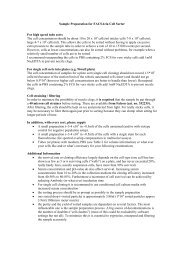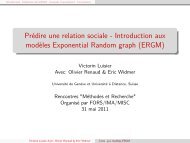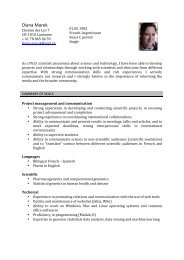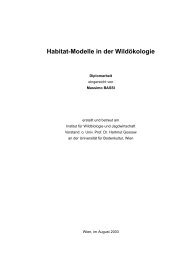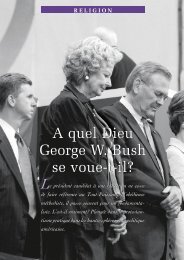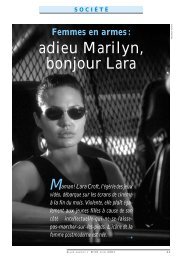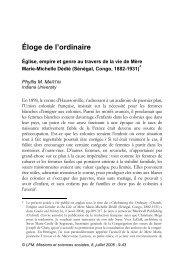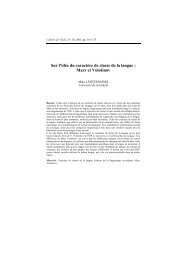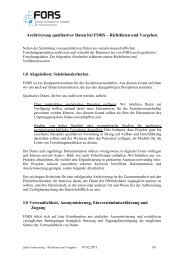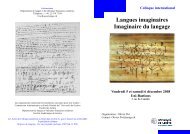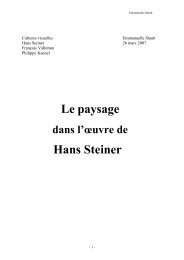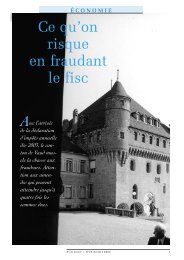conference programme book - European Survey Research ...
conference programme book - European Survey Research ...
conference programme book - European Survey Research ...
You also want an ePaper? Increase the reach of your titles
YUMPU automatically turns print PDFs into web optimized ePapers that Google loves.
WEDNESDAY 20 JULY 83As cross-cultural/naonal surveys are growing performed, survey researchers pay more aenon to sources ofmeasurement errors that can undermine validity, among them, the translaon errors survey quesons or thelack of construct overlap across the linguisc or cultural groups involved. Differenal Item Funconing (DIF) canprovide evidence of such sources of measurement errors. Given that survey praconers can seldom removesurvey quesons or scale items flagged DIF, the research queson is: How much DIF can survey praconeradmit without undermining total-group score comparisons? The aim of this work is to figure out how muchDIF can invalid total-group score comparisons...2.18.4 Measurement Equivalence Across Subnaonal Groups: An Analysis of the Concepon of Naonhoodin SwitzerlandO. Sarrasin 1 , E. Green 1 , A. Berchtold 21 Misc - University of Lausanne, Switzerland; 2 University of Lausanne, SwitzerlandWhen comparing survey responses of different groups, measurement equivalence ensures that revealed differences(i.e., in means or correlaons between scores) are substanal and not biased by methodological issues.While measurement equivalence tesng is frequently carried out in cross-naonal studies, it is sll rare whencomparing disnct naonal subgroups within countries. Based on data from three large surveys, the presentstudy however illustrates the importance of within-country measurement equivalence tesng by examiningwhether the measurement of the concepon of naonhood (i.e., drawing boundaries between those who arepart of the naon and those who are not) is equivalent across the two largest linguisc regions of Switzerland.Based on recent literature and referenda results, Swiss German respondents are expected to adhere toa stronger ethnic (e.g., being Chrisan) as well as civic concepon of naonhood (e.g...2.19 Open-ended survey quesons ITo be held on July 20, 2011 from: 11:00 to 12:30, in room 315.Coordinated by:• Nick Allum - University of Essex, United Kingdom• Graham Hughes - University of Surrey, United Kingdom2.19.1 Using qualitave soware to analyse open-ended survey quesons: a guide for quantave analystsG. Hughes 11 University of Surrey, United KingdomThis paper illustrates the ulity of four Computer Assisted Qualitave Data AnalysiS (CAQDAS) packages inanalyzing open-ended survey quesons (OEQs), ATLAS., MAXqda, NVivo and QDA Miner, each of which hasstrengths and weaknesses. It is argued that analyc benefits gained from systemac analysis of OEQs areworth the me required to learn a CAQDAS package. Indeed, it should usually not be necessary to undertakeextensive training as recent modificaons have made some packages parcularly accessible for handling surveydata.2.19.2 A Mixed-Methods Approach to the Analysis of Open-Ended CommentsC. Robins 1 , K. Lee 1 , S. Perry 1 , S. Berkowitz 1 , W. Hintze 11 Westat, United States<strong>Survey</strong> analysts are oen challenged by open-ended survey comments, which interject textual data into anotherwise quantave analysis task. In this presentaon, we describe our team’s mixed-methods approachto sampling and analyzing lengthy open-ended comments for a large-scale military survey. We hope to showparcipants that qualitave survey data, even in large quanes, can be analyzed rigorously and painlessly. In



